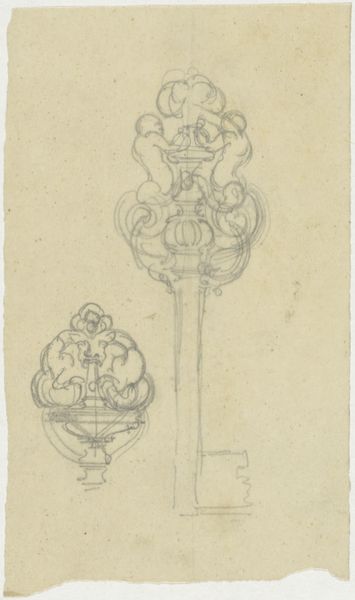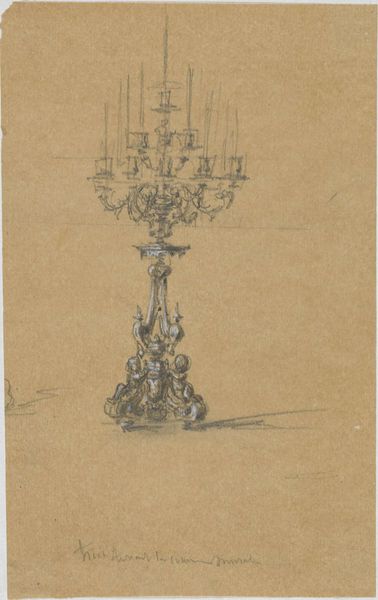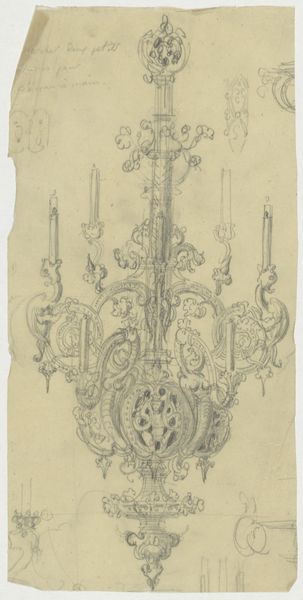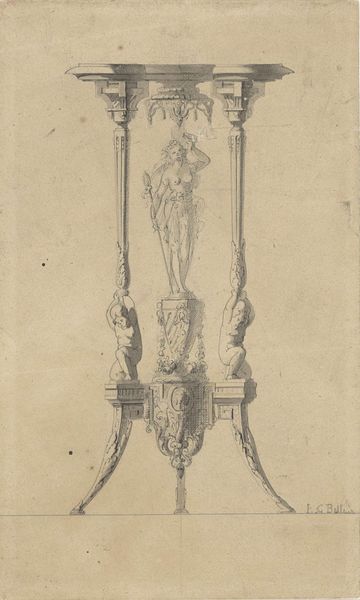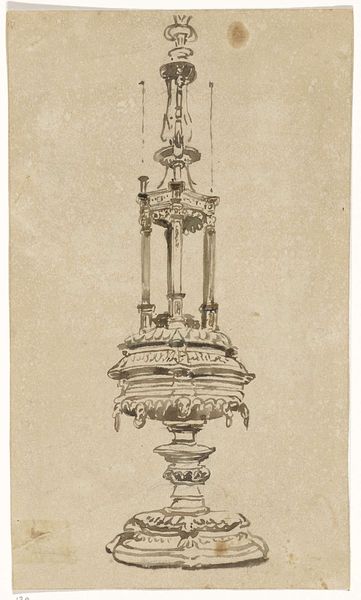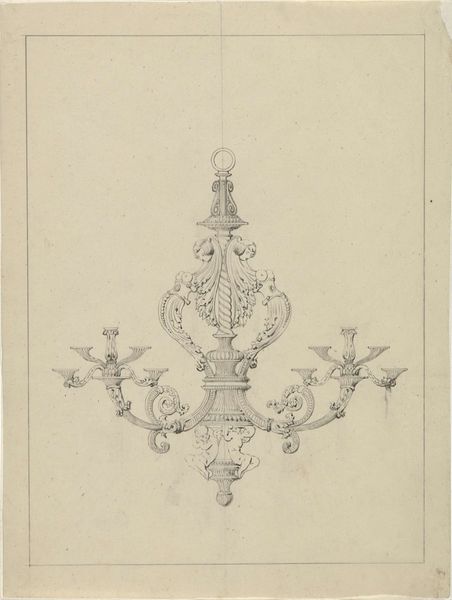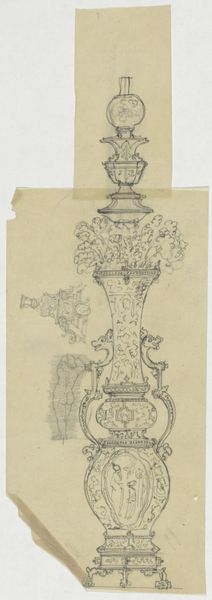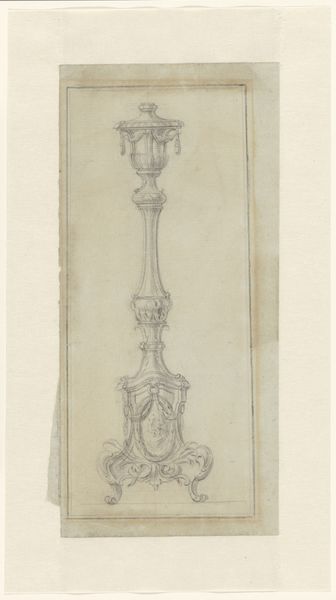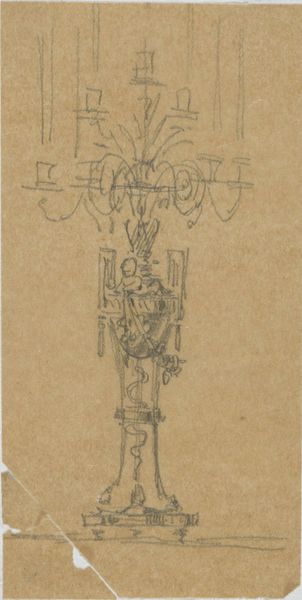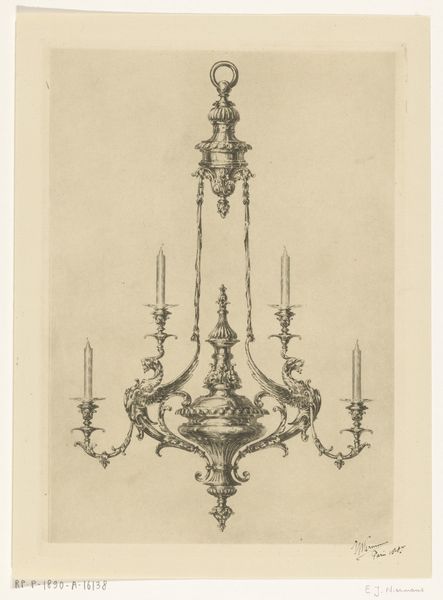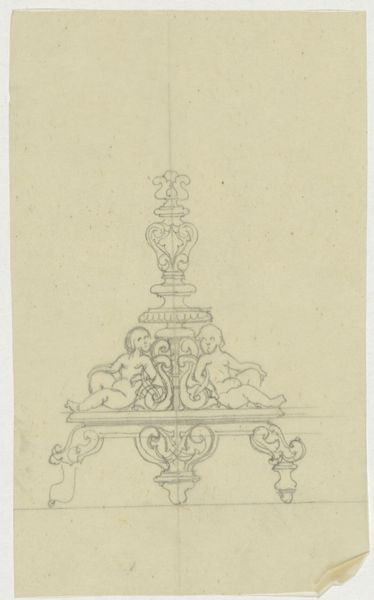
Dimensions: height 112 mm, width 67 mm
Copyright: Rijks Museum: Open Domain
Curator: Here we have Henri Cameré's "Ontwerp voor een kandelaber," a design for a candelabra dating from around 1864 to 1894. The sketch employs pencil and ink to realize this design. Editor: It has an incredible sense of lightness and movement, even though it's just a drawing. I find myself immediately drawn to the figures on either side, seemingly supporting the weight of the candelabra above. There’s a whimsical almost ethereal quality to them. Curator: The choice of pen and ink lend to that effect, the spontaneity captures the spirit of the Art Nouveau movement which favored fluid lines and organic forms. We see decorative art taking hold with emphasis on ornamentation. I believe the candelabra sketch would likely have appealed to an emerging bourgeois consumer class who valued elegant functional objects for the home. Editor: I’m fascinated by the use of classical figures merged with a growing decorative trend. Is this simply aesthetic, or does it represent an effort to legitimize Art Nouveau, aligning new styles with established historical symbols of wealth and power? Curator: That's precisely the question this provokes. Consider the rise of industrialization, with an ever increasing production of consumer goods. We see here a design seemingly consciously referencing past symbols, creating layers of status and sophistication. This aesthetic allowed consumers to indulge in what they imagined was luxury. Editor: I think too about accessibility and social participation. This image signifies what could be owned and obtained based on class structures and expectations. Who were these pieces created for, and more importantly, who did not have access to them? Curator: These questions are crucial. And as an object destined for a domestic space, the candelabra is very much engaged with ideas surrounding private displays of affluence. Editor: And the construction of "good taste," a loaded concept, really. Thinking about the visual language embedded within seemingly innocuous domestic objects is important. Curator: It certainly gives us a glimpse into the complexities of art, society, and the individual's place within it during a period of great change. Editor: It reminds us to remain critical about art's engagement with ideology and consumerism, and how these forces shaped past aesthetics.
Comments
No comments
Be the first to comment and join the conversation on the ultimate creative platform.
